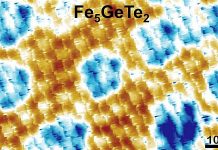
New observations from the James Webb Space Telescope (JWST) reveal that black holes play a major role in stopping star formation in massive galaxies.
This groundbreaking research, published in the journal Nature, shows that black holes can effectively “turn off” a galaxy’s ability to create new stars by forcefully ejecting large amounts of gas.
An international research team found that these galactic winds are predominantly composed of neutral gas, which was almost invisible in earlier studies due to technological limitations.
This discovery marks the first direct evidence that supermassive black holes can actively shut down entire galaxies.
Previously, astronomers could only detect ionized gas, which is warm. The JWST’s advanced capabilities now allow for the detection of cold, neutral gas as well, providing a fuller picture of the processes at work.
Dr. Rebecca Davies from Swinburne University of Technology in Australia led the research team that observed this phenomenon in a distant, massive galaxy with a significantly low star formation rate. They noticed that the galaxy’s black hole was expelling gas at a rate much faster than the galaxy could use it to form stars.
This process, known as “quenching,” is crucial because it signifies a galaxy’s shift from being vibrant and star-forming to becoming dormant and unchanging. Although scientists know quenching is a key part of a galaxy’s life cycle, they are still trying to fully understand why and how galaxies stop forming stars.
The team focused on a galaxy so far away that its light took more than 10 billion years to reach Earth. This distant galaxy’s active galactic nucleus (AGN)—a supermassive black hole devouring large amounts of gas—was found to drive massive outflows of gas.
The JWST’s observations showed that the rate of outflow in the neutral gas was about 100 times larger than in the ionized gas. This indicates a vast amount of previously unseen mass being expelled from the galaxy.
Dr. Davies highlighted the significance of the JWST in these findings, stating that previous methods only detected about 1% of the outflowing mass, likening earlier observations to “scraping the tip of the iceberg.”
The research team is eager to continue using the JWST to study more galaxies, hoping to uncover further insights into the dynamic processes that lead galaxies to cease star formation.
This new data from the JWST not only provides deeper understanding of galactic dynamics but also showcases the telescope’s potential to revolutionize our knowledge of the universe.



